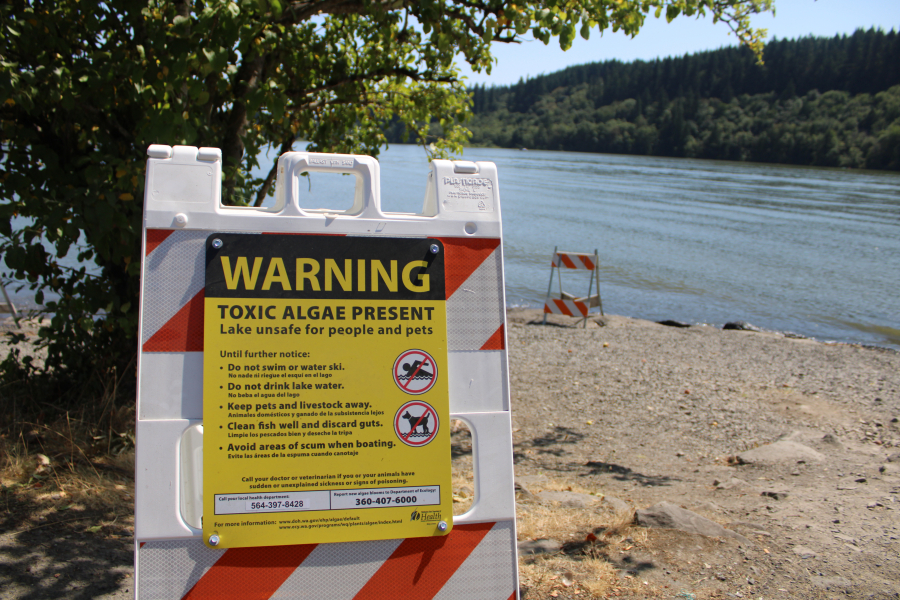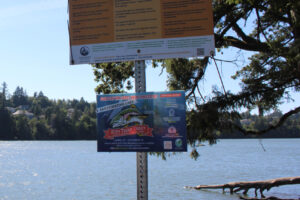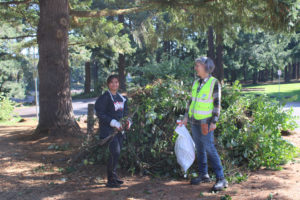Clark County Public Health has issued a warning advisory at Lacamas Lake due to elevated levels of cyanotoxins from harmful algae.
Public Health has been monitoring harmful algal blooms at Lacamas Lake since early July. A warning advisory was in place at the lake for a few weeks last month but was lifted after water quality improved.
Results from water samples taken from Lacamas Lake on Monday, Aug. 8, revealed cyanotoxin levels were once again above the threshold levels recommended by the Washington Department of Health. Warning signs are being placed at public access points at the lake.
Cyanotoxins can be harmful to people, especially young children, and deadly for small pets that drink the water. Health officials recommend:
- No swimming or water skiing.
- No water contact for animals.
- Avoiding areas of scum when using motorized boats, paddle boarding, kayaking or canoeing.
- No drinking lake water.
- Cleaning fish well and discarding organs.
Public Health will continue to monitor Lacamas Lake and, while blooms are present, take weekly water samples to test toxin levels. Signs will be updated as conditions change.



